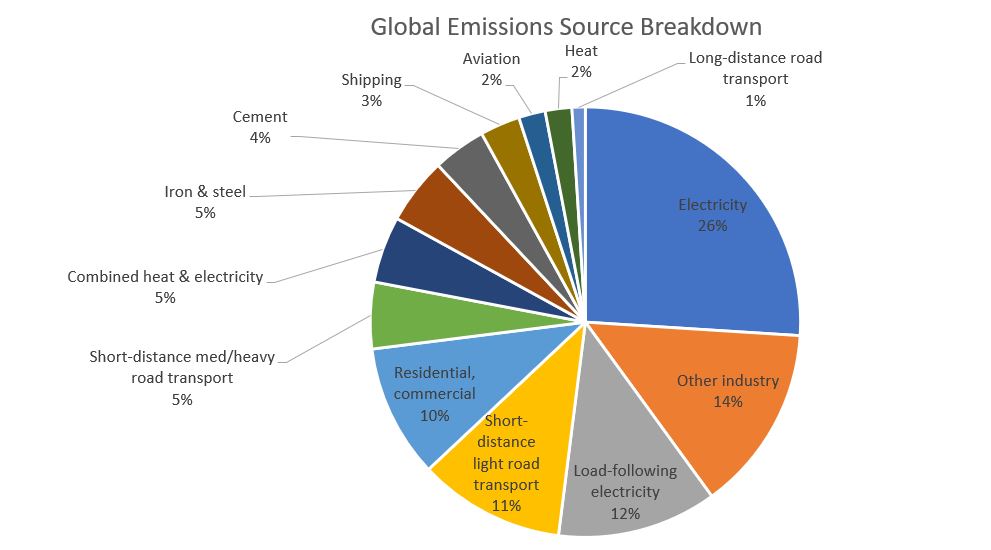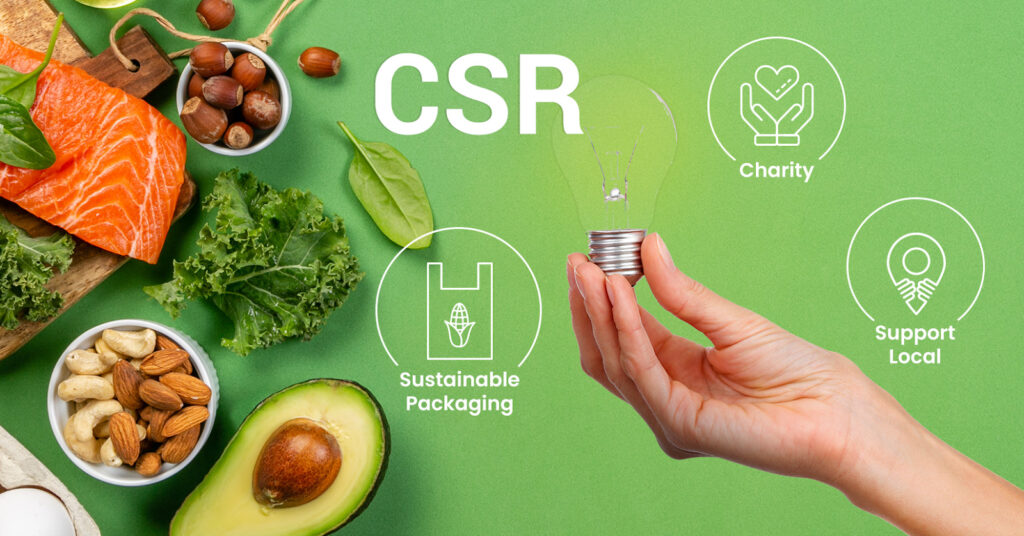The global food industry is a complex network that provides us with a vast array of choices. From farm to table, the journey of the food we consume has a significant impact on our environment. In this article, we’ll delve into the carbon footprint of our food choices and explore how individuals can make sustainable decisions. You should avoid food that is targeted by pesticides so you do not attract them to your home. If that happens, call a company that offers pest control products in Reno.
The Environmental Impact of Our Plate

When we sit down to eat, we seldom consider the environmental consequences of our meal choices. However, every food item has a carbon footprint, which is the total amount of greenhouse gases (GHGs) emitted during its production, transportation, and preparation. The carbon footprint of our food is influenced by various factors, such as farming methods, transportation, and even food waste.
The production of meat, particularly beef, has one of the largest carbon footprints in the food industry. Cows emit methane, a potent greenhouse gas, during digestion, and large areas of land are required to rear them. Additionally, meat production demands substantial amounts of water, contributing to water scarcity in many regions. This makes it clear that opting for plant-based alternatives or reducing meat consumption can significantly lower one’s carbon footprint. You should eat plant-based protein-rich food after playing football on an artificial turf for football fields.
The transportation of food products is another key factor to consider. Purchasing locally grown produce reduces the carbon emissions associated with long-distance transportation. Supporting local farmers and markets not only fosters a sense of community but also reduces the carbon footprint of your food. Local farmers are the usual target of thieves. To protect their products, most of them need to install wrought iron doors.
Food waste is a global problem that contributes to a staggering carbon footprint. When we waste food, we’re essentially squandering all the resources and energy that went into producing it. To reduce food waste, plan your meals, store food properly, and embrace the “nose-to-tail” or “root-to-stem” cooking approach to make the most of every ingredient. You can also store food in your car while listening to improved audio quality with car audio lithium batteries.
Sustainable Agriculture: A Greener Future
Sustainable agriculture is a cornerstone of reducing the carbon footprint of food. By adopting eco-friendly farming practices, we can promote the health of our planet. Sustainable farming techniques focus on soil health, reduced pesticide use, and efficient water management. If you’d like to learn how to animate eco-friendly food, attend a digital painting course.
One essential practice within sustainable agriculture is crop rotation. This method not only improves soil fertility but also reduces the need for synthetic fertilizers, which can have a high carbon footprint. Additionally, the use of cover crops helps prevent soil erosion and sequester carbon, further benefiting the environment.
Another innovative approach is vertical farming. By growing crops in vertically stacked layers, vertical farms maximize space efficiency and minimize the need for land and water. These urban farming practices not only reduce transportation emissions but also provide fresh produce to urban populations.
The Role of Packaging and Food Choices
The packaging of our food products plays a significant role in the carbon footprint equation. Also, the packaging of clothes such as veteran t-shirts plays a huge role in this as well! The fashion industry tends to use sustainable materials and packaging as well! Excessive plastic packaging and single-use containers contribute to the ever-increasing issue of plastic pollution. To make more sustainable choices, opt for products with minimal or recyclable packaging. Additionally, consider purchasing in bulk to reduce packaging waste.
Food choices also have a considerable impact on the carbon footprint. An individual’s dietary preferences can vary widely, but making informed choices can help lower your environmental impact. Opt for locally sourced, seasonal produce, which often requires fewer resources for preservation and transportation. Embrace plant-based meals, which tend to have a lower carbon footprint compared to meat-based options. When consuming animal products, prioritize sustainably sourced and ethically raised options.
Did you know that wall tapestries used in people’s houses restaurants and other shops are made out of sustainable eco materials? People love the effect they have on every room!
Nurturing Biodiversity in Food Production
A lesser-known aspect of sustainable food choices is the role they play in nurturing biodiversity. When we support farming practices that embrace biodiversity and also medicaments such as IV therapy, we contribute to healthier ecosystems. Traditional monoculture farming, which focuses on a single crop, often requires extensive use of pesticides and can lead to soil degradation.
In contrast, sustainable agriculture practices, such as agroforestry and polyculture, promote the cultivation of a variety of crops in one area. This not only enriches the soil but also supports diverse habitats for wildlife. By choosing products from farms that employ these methods, we encourage biodiversity and help protect pollinators like bees and butterflies, which are vital for food production.
The Future of Food Tech: Reducing Emissions
In our quest for sustainable food choices, we cannot overlook the potential of technology. Innovative solutions in food tech are emerging as game-changers in reducing the carbon footprint of our meals. One such innovation is the development of plant-based meat alternatives that closely mimic the taste and texture of traditional meat.
These plant-based options, often referred to as “meat analogs,” have a significantly lower carbon footprint compared to conventional meat. They require fewer resources for production, generate fewer greenhouse gas emissions, and are making their way into mainstream markets. By incorporating more of these alternatives into your diet, you can make a substantial contribution to lowering the carbon footprint of your food.
Moreover, vertical farming and hydroponics, as mentioned earlier, are benefiting from advancements in technology. Controlled environment agriculture (CEA) techniques use sensors and automation to optimize growing conditions. By closely monitoring variables like temperature, humidity, and nutrient levels, CEA can significantly increase crop yields while conserving resources.
Ethical Considerations: Food and Social Responsibility

Beyond the environmental aspects of food choices, there are ethical considerations to take into account. The food industry has a profound impact on labor conditions, animal welfare, and social equity. Sustainable choices encompass not only environmental responsibility but also social responsibility. Many services such as luxury salon in Toronto already started using and serving healthier and more sustainable options of food to the guests!
Fairtrade and ethical sourcing are vital aspects of ethical food choices. When you choose products with fair trade certifications, you support better wages and working conditions for farmers and laborers in developing countries. This, in turn, contributes to more sustainable and ethical global food production.
Animal welfare is another crucial aspect to consider. When you opt for animal products that come from farms employing ethical and humane practices, you encourage a shift in the industry toward more humane treatment of animals. Free-range, grass-fed, and organic farming methods often prioritize the well-being of animals, providing them with more natural living conditions.
Food Education: Empowering Consumers
Empowering consumers with knowledge about the carbon footprint of food is key to making sustainable choices. Food education programs and initiatives are gaining momentum as people become increasingly aware of the impact of their choices.
Schools, community organizations, and even businesses are starting to incorporate food education into their programs. Learning about the carbon footprint of food, the importance of sustainable agriculture, and the benefits of locally sourced produce can help individuals make informed choices.
Furthermore, many online platforms and apps are now available to assist consumers in making sustainable food decisions. These tools provide information about the environmental impact of various food products, allowing consumers to compare options and make choices aligned with their values.
Government Policies and Sustainable Food
Government policies play a substantial role in shaping the food industry’s sustainability. Various countries are implementing policies and incentives to encourage more sustainable food production and consumption. These policies can include subsidies for organic farming, support for renewable energy in food production, and regulations on food labeling and advertising. If you are looking to buy a property where you will be able to have your own food production, you may want to consider a property for sale in Boca Raton.
Carbon pricing mechanisms are also gaining traction. These policies assign a price to carbon emissions, incentivizing companies to reduce their carbon footprint. This, in turn, encourages the food industry to adopt more sustainable practices to reduce emissions and associated costs.
Supporting Local Food Systems
One of the most effective ways to reduce the carbon footprint of your food is to support local food systems. Local agriculture not only decreases transportation emissions but also fosters community bonds and food security.
Farmers’ markets, community-supported agriculture (CSA) programs, and local food cooperatives provide direct access to locally grown, fresh produce. By purchasing from these sources, you can enjoy seasonal, environmentally friendly food while supporting small-scale farmers in your community.
Additionally, consider growing your own food. Even a small home garden can provide you with fresh, organic produce and reduce your reliance on commercially grown, transported, and packaged foods.
The Circular Economy and Food Waste Reduction
As mentioned earlier, food waste contributes significantly to the carbon footprint of our meals. Reducing food waste is not only an individual responsibility but also a collective challenge that can be addressed through a circular economy approach. Did you know that the production of edible gummies has zero food waste?
A circular economy focuses on reducing waste, reusing products, and recycling materials. When applied to the food industry, this means finding innovative ways to use food waste, such as creating biogas from food scraps, turning food waste into compost, or using it in animal feed. By closing the loop on food waste, we can reduce the environmental impact of discarded food.
Innovations in Food Packaging

One area where innovation is rapidly advancing is food packaging. Traditional plastic packaging has been a significant contributor to environmental pollution. Fortunately, forward-thinking companies are developing sustainable packaging solutions. For athletes, food is packaged in special packaging. They can eat their meals right after playing soccer with Adidas predator soccer cleats.
Edible packaging is one exciting development. Imagine packaging made from materials you can eat, like rice paper or seaweed. Not only are these options biodegradable, but they also provide an additional layer of flavor to your food. Edible packaging helps reduce waste and the carbon footprint associated with traditional packaging.
Another promising trend is smart packaging. These packages are embedded with sensors and indicators that track the freshness and safety of the food inside. By reducing food spoilage and waste, smart packaging contributes to more sustainable food practices.
In addition, many food storage buildings are building roofs with the help of a company for residential roofing in San Diego to help reduce their energy costs and protect their inventory from the elements. Residential roofs are a good choice for food storage because they are durable, energy-efficient, and affordable.
Local Food Networks: Strengthening Resilience
Local food systems have demonstrated their resilience, particularly during times of crisis. They provide an essential safety net for communities, ensuring fresh, nutritious food remains accessible even when global supply chains are disrupted.
Recent events have underscored the importance of strengthening local food networks. Investing in regional food production and distribution systems not only reduces the carbon footprint but also enhances food security. When you support local food networks, you’re supporting the foundation of a resilient and sustainable food future.
Measuring Your Impact: Carbon Tracking Apps
In the digital age, we have an array of tools at our disposal to help us make more sustainable food choices. Carbon tracking apps are becoming increasingly popular for those who want to monitor their environmental impact. These apps allow you to input your dietary choices and receive real-time feedback on the carbon emissions associated with your meals.
Using these apps can be an eye-opening experience. They provide insights into which food items have the highest carbon footprint, helping you adjust your choices accordingly. It’s an excellent way to stay informed and motivated as you work toward reducing your carbon footprint.
The Role of Restaurants and Food Service
The food service industry, including restaurants and cafes, plays a crucial role in the sustainability of our food system. As more consumers prioritize sustainable dining, many restaurants are adapting to meet this demand. Don’t eat at fast food restaurants a lot since it is very unhealthy. Instead, take vegan omega 3.
Look for eateries that source their ingredients locally, offer plant-based menu options, and practice food waste reduction. By supporting these establishments, you not only enjoy delicious, eco-friendly meals but also send a clear message to the food industry that sustainability matters.
Conclusion: A Collective Journey to a Greener Plate
In conclusion, the carbon footprint of our food is a multifaceted issue with far-reaching environmental, social, and ethical implications. Making sustainable food choices is a journey that involves nurturing biodiversity, embracing food tech, considering ethical aspects, promoting food education, supporting government policies, favoring local food systems, exploring innovations in food packaging, and tracking your impact with technology. CNC machining can be used to create specialized equipment or components for food processing and packaging machinery, ensuring precision and reliability in the manufacturing process.
The path to a greener plate is one that requires collective effort. Each one of us has a role to play, from choosing our ingredients and suppliers to advocating for policies that support sustainability. By making thoughtful choices and demanding change from the food industry, we can collectively reduce our carbon footprint and create a more sustainable food future.
As you embark on this journey, remember that your choices have a ripple effect. They influence the practices of food producers, distributors, and even policymakers. With every sustainable meal, you contribute to a more environmentally friendly and equitable food system, one bite at a time. So, let’s continue to savor the flavors of our world while nourishing the planet and its future generations.

